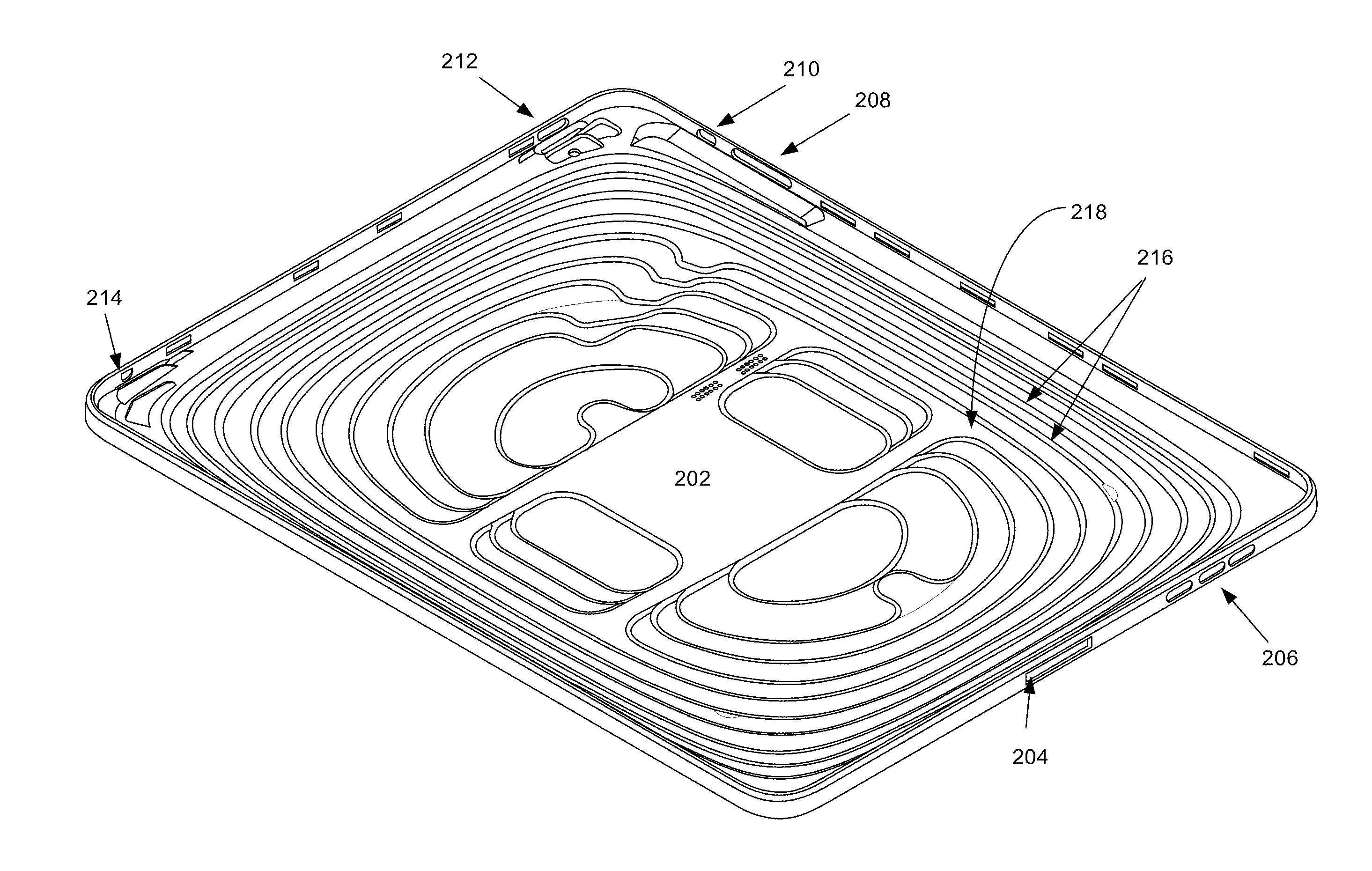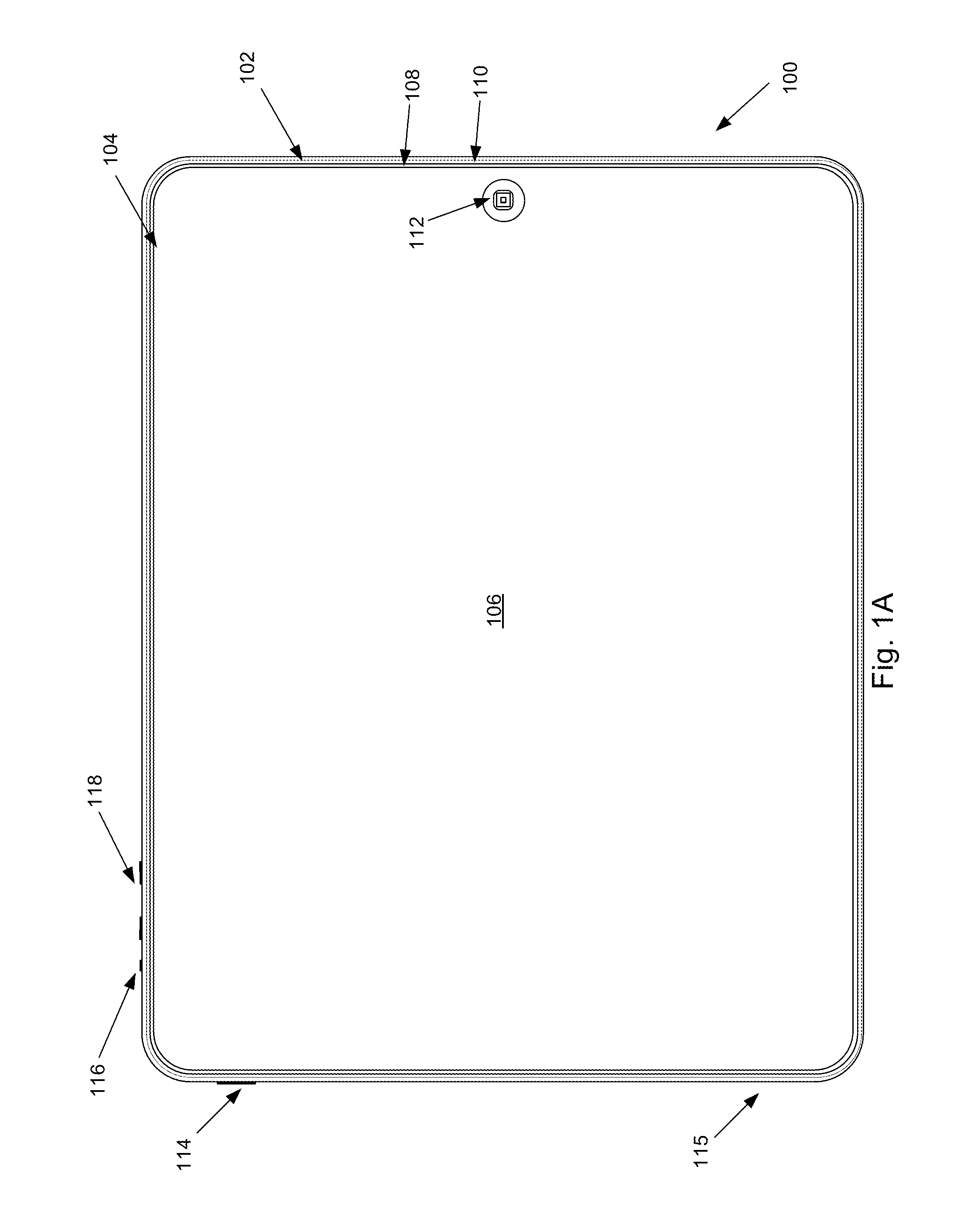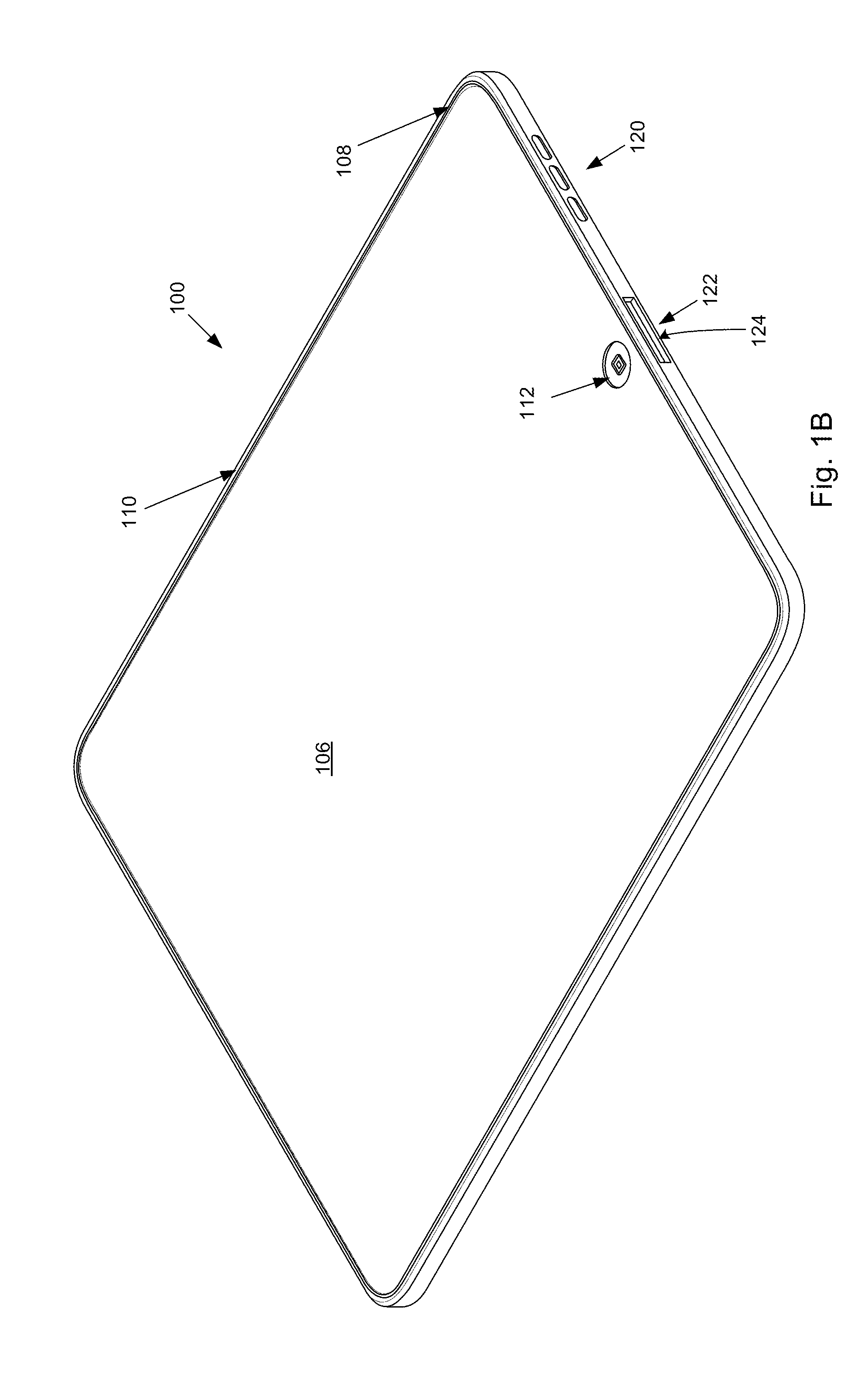Handheld computing device
a computing device and hand-held technology, applied in the field of portable computing devices, can solve the problems of user dissatisfaction, damage to some internal components (such as printed circuit boards) of the portable device, and complicate the housing design, so as to achieve the effect of substantially reducing the risk of deformation or damage to the housing
- Summary
- Abstract
- Description
- Claims
- Application Information
AI Technical Summary
Benefits of technology
Problems solved by technology
Method used
Image
Examples
Embodiment Construction
[0004]The described embodiments relate generally to portable computing devices such as laptop computers, tablet computers, and the like. More particularly, enclosures of portable computing devices and methods of assembling portable computing devices are described.
[0005]2. Description of the Related Art
[0006]In recent years, portable computing devices such as laptops, PDAs, media players, cellular phones, etc., have become small, light and powerful. One factor contributing to this reduction in size can be attributed to the manufacturer's ability to fabricate various components of these devices in smaller and smaller sizes while in most cases increasing the power and or operating speed of such components. The trend of smaller, lighter and powerful presents a continuing design challenge in the design of some components of the portable computing devices.
[0007]One design challenge associated with the portable computing device is the design of the enclosures used to house the various inte...
PUM
 Login to View More
Login to View More Abstract
Description
Claims
Application Information
 Login to View More
Login to View More - R&D
- Intellectual Property
- Life Sciences
- Materials
- Tech Scout
- Unparalleled Data Quality
- Higher Quality Content
- 60% Fewer Hallucinations
Browse by: Latest US Patents, China's latest patents, Technical Efficacy Thesaurus, Application Domain, Technology Topic, Popular Technical Reports.
© 2025 PatSnap. All rights reserved.Legal|Privacy policy|Modern Slavery Act Transparency Statement|Sitemap|About US| Contact US: help@patsnap.com



